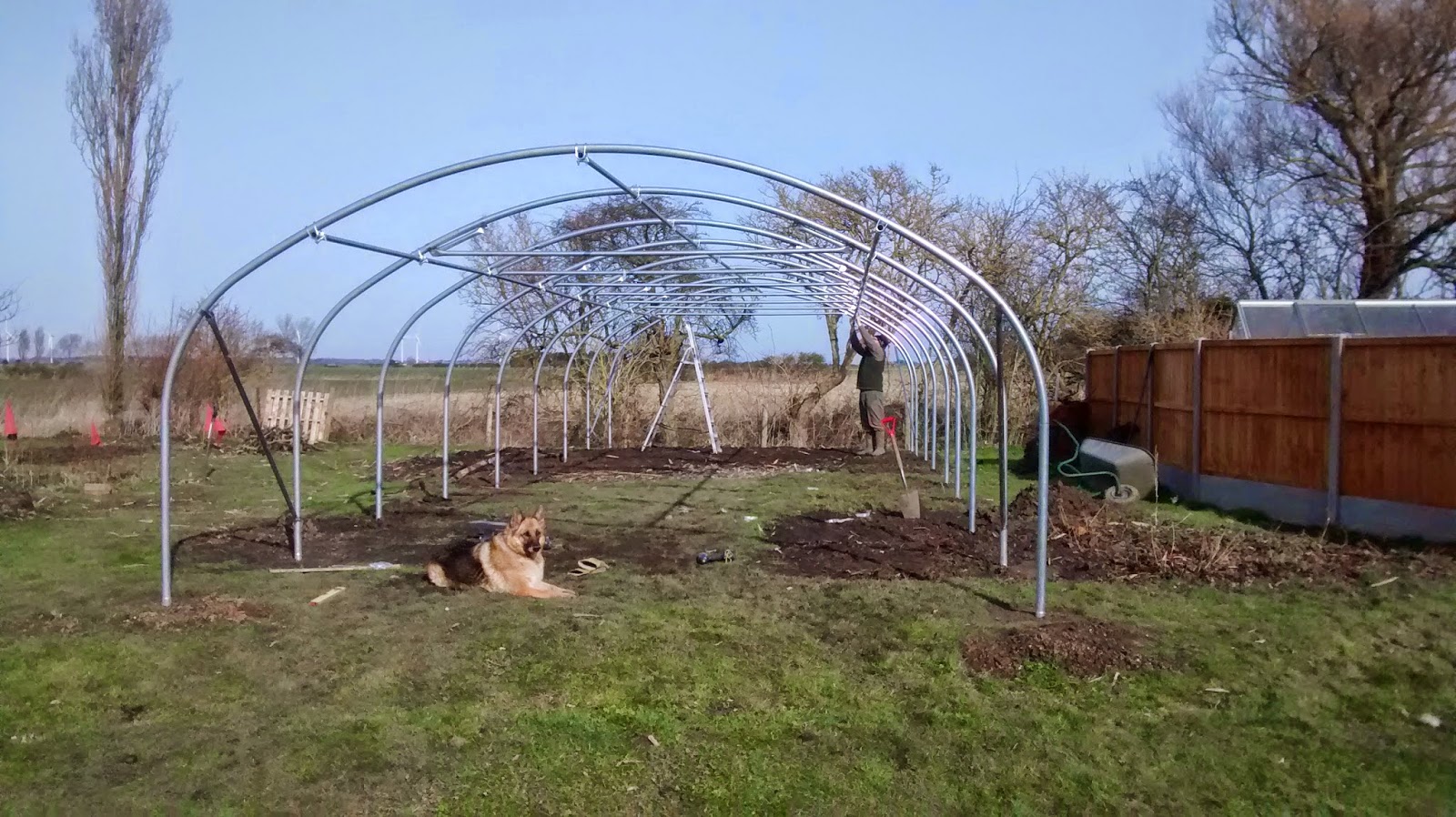Years ago I really wanted to be a vet. I was quite enthused so my Mum took me along to have a chat with our vet. It soon became clear that I was not academic enough to get the qualifications that were needed to get me to vet uni so that idea fizzled out into the ether. It has occurred to me that being a flock owner will actually give me the opportunity to look after animals in a way that would satisfy that longing to be a vet albeit in a very small way.
 |
| Can you spot the rabbit? |
We struck upon the idea that what we needed to do with our sheep was a faecal egg count. OK. I found a nice laboratory online that would sell us the kit and included in the price was the egg count. An egg count is where a small poop sample is examined under the microscope and the number of eggs from parasites are counted and therefore determined whether to be a problem or not. The kit came as two zip lock bags and ten (yes, 10) blue plastic gloves. I eagerly read the instructions that were included and established that I needed to collect 10 samples from the sheep, pop them into the bags with the gloves (5 in each bag), fill the paperwork and put it in the post. Marvellous. Timing was everything here as I could see that putting the samples in the post after the last collection on Saturday (around lunchtime) could mean that they would be festering in the post box until late Monday. So come one Monday morning I summed the courage to do this collection. Was this like being a vet? I completed the paperwork first, something which turned out to be a good idea as it meant that I could get them away to the post quicker. I wrote on the bags first, again something which would have been trickier once they were ‘full’. I put 5 blue gloves in one pocket, one on the left hand and 4 in the other so I knew when to change collection bags. All was good and away I went.
 |
| Possibly a different rabbit or the same one |
Luckily we only have sheep in the field and the occasional rabbits. It is amazing how similar everything looks when you are searching for a fresh sample. How much was a sample? A handful? Just a few ‘bits’? Sheep poop has been described in our household as chocolate raisins and we have been blessed with sheep that have had good digestive habits so I was collecting chocolate raisins, but finding ten lots?!? It then occurred to me that I should try to get a fresh sample from each sheep even though it was to be tested as a group. Standing around in a field in late September waiting for a sheep to poop is not such a bad way to spend an hour and it occurred to me that it probably wouldn’t be a vet who would be doing this job but his student. I was duly rewarded eventually by each sheep getting the urge but as I lurched towards them with an outstretched blue gloved hand, they do have a tendency to run for it, leaving a trail of precious fresh poop lost in the long grass. I found that it was distinguishable from the old stuff because it was still warm. I know, its all in the details.
Realising that collecting ten samples by this method was going to take me beyond the post time, I set about collecting from their sleeping area, a rich source although not necessarily all sheep. Very quickly one bag was full and so I switched to another pocket. The second bag started to fill up until I had just one glove left ... I could have done with a spare so that I didn’t have to do everything one handed. Two bags full and zipped, I was back inside as bemused sheep looked on and I was eager to get my bounty into the post. I then had the idea of double bagging the samples with a bigger zip bag and stuffed the lot into the pre-paid posting bag along with the paperwork. Hand cleaning took on a whole new meaning that day. I had identified the best (earliest collected) post box and posted my samples with just minutes to spare before the collection. Phew!
To my surprise and delight the laboratory didn’t ask me about any rogue rabbit readings that they may have found or about the amount of each sample that I managed to collect. Instead the email that arrived the next day said that they had a very low infection of all the expected parasites, so we concluded, no worming necessary. We will monitor the situation (do another one in a few months) but this time I will have eleven gloves.






































